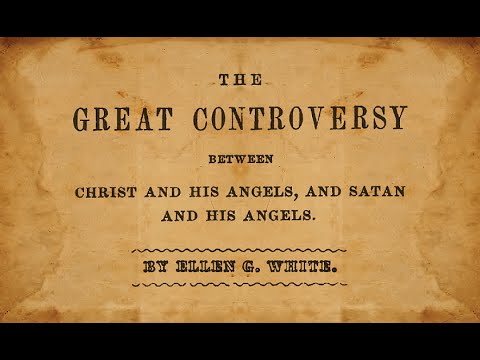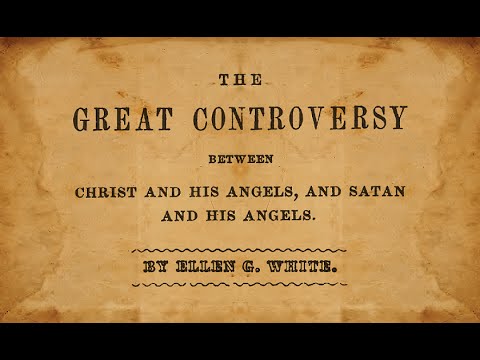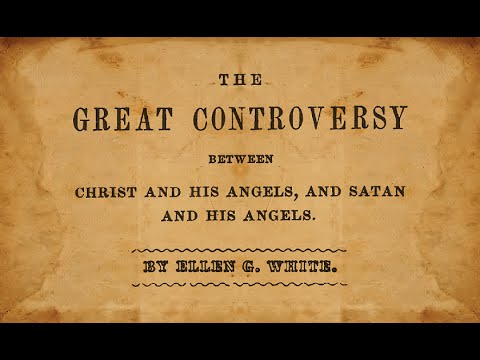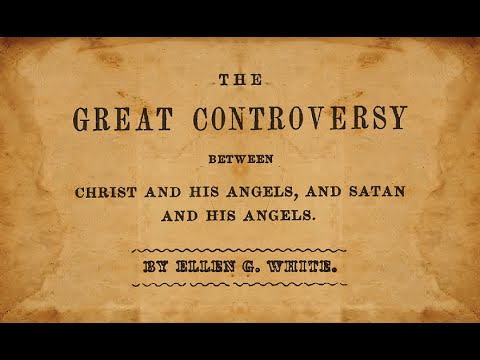“The information about the early British Christians covers the years from before A.D. 300 through 800. Very early, before A.D. 300, Christian missionaries came to Britain with pure Bible truths. Upon being persecuted, they fled northward to Scotland, and thence to Ireland. Columba (521-597) from Ireland, went to Scotland and founded an island missionary station on Iona in 563. From there, missionaries were sent to many European countries, and finally in 614 to Italy. Roman agents arrived in A.D. 596 and won the heathen Saxons to their worldly religion. For more than a thousand years, Christians were heavily persecuted; throughout this time believers in the Bible Sabbath continued to share their faith in parts of Europe, Asia, and Africa.
The history of the Waldenses (also called Vaudois) spans more than a millennium of persecution and bloodshed, till the mid-19th century. It was Pope Innocent VIII who, in 1487, ordered them to be “crushed as venomous serpents.”” ~Chapter Introduction, Harvestime edition.
https://m.egwwritings.org/en
https://play.google.com/store/apps/details?id=com.whiteestate.egwwritings
http://ellenwhiteaudio.org/
http://ellenwhite.org/
http://bibletools.info/Gen_1.1
source
03_An Era of Spiritual Darkness (Falling Away/Apostasy) Great Controversy (1911) E.G. White
“For three hundred years fierce persecution lashed at the early Christian Church, and then in A.D. 311, peace came and things changed. Constantine, the ruler of the Roman Empire, decided for political reasons to become friends with the Church—and what it brought changed all history for all time to come. Compromise, conformity, and persecution of former brethren began. Gradually the Church took all the steps down. The primary dates in this chapter cover nine centuries—from A.D. 311 (Constantine’s Edict of Toleration) to 1229 (when the Inquisition began). The papacy was firmly established by the sixth century; and, in A.D. 538, the 1260 years of papal oppression (predicted in Daniel 7:25 and Revelation 13:5-7) began. The Second Council of Nicea (A.D. 787) finalized the establishment of image worship as a necessary part of Catholic worship. But it was Constantine’s decree of march 7, 321, making Sunday a public holy day, that laid the foundation for the their apostasy. The Council of Laodicea (c. 337) officially endorsed that first National Sunday Law. Shortly afterward, candles were burned before images and prayers were made to them. Gradually the apostasy deepened. By the Sixth Century the papacy was firmly established in power; and, in A.D. 538, the terrible 1260 years of papal oppression, predicted in Daniel 7:25 and Revelation 13:5-7, began. As though purgatory, prayers for the dead, and paid indulgences for sin were not enough, the terrible Inquisition, on an “official” basis, began in order to slay Christians—and also seize the property of wealthy Catholics. Millions were to die under its stroke.” ~Chapter Introduction, Harvestime edition.
https://m.egwwritings.org/en
http://ellenwhite.org/
http://ellenwhiteaudio.org/
source
02b_Persecution in the First Centuries – Great Controversy (1911) Ellen G. White
“The events in this chapter span a period of time from A.D. 64 through the mid-seventh century. But several of its most important events (during the time of Constantine) occurred between A.D. 311 to 337. The persecutions against Christians began under the Roman emperor, Nero, about July of A.D. 64, and continued on intermittently for centuries. It was the Christian writer, Tertullian (197-227) who, about the year 206, wrote to the emperor, Septimius Severus, that “the blood of Christians is seed.” In April 311, the Roman persecutions against the Christians suddenly ceased, as Constantine I, with his associates, issued an Edict of Toleration. Now that the Church had become popular, unscriptural errors from paganism immediately began crowding into it. During Constantine’s reign (306-337), the Church became the official religion of the Roman Empire. Persecution of Bible-believing Christians, by half-converted pagan church leaders, began—and continued on for centuries.” ~Harvestime Ed.
https://m.egwwritings.org/en
http://ellenwhite.org/
http://ellenwhiteaudio.org/
source
02a_Persecution in the First Centuries – Great Controversy (1911) Ellen G. White
“The events in this chapter span a period of time from A.D. 64 through the mid-seventh century. But several of its most important events (during the time of Constantine) occurred between A.D. 311 to 337. The persecutions against Christians began under the Roman emperor, Nero, about July of A.D. 64, and continued on intermittently for centuries. It was the Christian writer, Tertullian (197-227) who, about the year 206, wrote to the emperor, Septimius Severus, that “the blood of Christians is seed.” In April 311, the Roman persecutions against the Christians suddenly ceased, as Constantine I, with his associates, issued an Edict of Toleration. Now that the Church had become popular, unscriptural errors from paganism immediately began crowding into it. During Constantine’s reign (306-337), the Church became the official religion of the Roman Empire. Persecution of Bible-believing Christians, by half-converted pagan church leaders, began—and continued on for centuries.” ~Harvestime Ed.
https://m.egwwritings.org/en
http://ellenwhite.org/
http://ellenwhiteaudio.org/
source
01_The Destruction of Jerusalem – Great Controversy (1911) Ellen G. White
“Nearly 40 years after Christ predicted these events, in A.D. 66 (Luke 19:42-44), the Jews rebelled against the Roman Empire. Cestus withdrew his troops in October A.D 67. On May 10, A.D. 70, Titus besieged the city, and it fell in August.” (Harvestime ed.)
https://m.egwwritings.org/en
http://ellenwhite.org/
http://ellenwhiteaudio.org/
source





